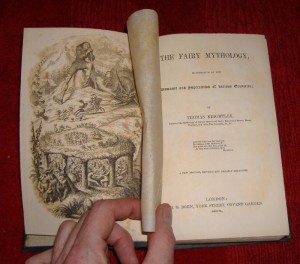Mermaid Lies January 24, 2017
Author: Beach Combing | in : Modern , trackbackThomas Crofton Croker was an early mid, nineteenth century Irish writer, most famous today for his Fairy Legends and Traditions of the South of Ireland, which appeared in three volumes between 1825 and 1828. Croker was not, in the modern sense, a folklorist. Some of the stories he wrote out he had heard as a young man, others he concocted from various traditional themes, and others were contributed by a group of Irish expat friends in London for larks. One of these stories is a remarkable piece, ‘the Soul Cages’, which describes the encounter between an Irish fisherman and a merman. The fisherman is invited for a shindig at the merman’s shack under the water and there he discovers that the merman collects human souls in lobster pots. The fisherman next tries to release as many of these as he can through a tedious stratagem, which only half works. The story is one of Croker’s most effective efforts and has certainly been printed more than almost any other of Croker’s tales. Beach says ‘Croker’s’. Actually, the story was written by one of his friends Thomas Keightley, an Irishman from County Kildare.
Things now get complicated. Keightley, a creepy and malicious individual, had a falling out with Croker, who had not credited his Irish contributors in Fairy Legends. Keightley then went on to publish, in 1828, Fairy Mythology his ‘bettering’ of Croker. ‘Soul Cages’ was, as readers will already have guessed, an invented traditional story, or rather it was a plagiarized traditional story. Keightley had taken the tale from the Brothers Grimm no less and their story ‘The Peasant and the Waterman’ adding some ‘Irish’ touches; or at least touches that would confirm what British readers thought about Ireland. The Brothers Grimm became very excited when they read Croker’s tales: in fact, they personally translated them into German. In the case of Soul Cages the brothers translated their own effort back into German with an Irish gloss! Keightley only confessed privately to the Grimms in a letter in 1829: that letter badly needs to be published if someone has access to the Grimm’s archives. However, unscrupulously, in a re-edition of the Fairy Mythology in 1850 he included the Soul Cages in an appendix. Then in 1860 he fessed up in an extraordinary note:
We must make an honest confession. This story had no foundation but the German legend in p. 259 [in Fairy Mythology]. All that is not to be found there is our own pure invention. Yet we afterwards found that it was well-known on the coast of Cork and Wicklow. ‘But’, said one of our informants, ‘It was things like flower-pots he kept them in.’ So faithful is popular tradition in these matters! In this and the following tale there are some traits by another hand [i.e. Croker] which we are no unable to discriminate.
So translated. Yes, I made the whole thing up, but I’m publishing it here anyway, never mind the fact that the story I copied it from is in the same volume! Oh and it doesn’t really matter because I afterwards came across someone on the Irish coast who had heard a similar story.
Beach would bet coppers to silver that Keightley had not come across someone on the Irish coast who had heard a similar story. As to the ‘Soul Cages’, practically no one has noted Keightley’s confession and the tale continues to be anthologized and celebrated and analysed: crucially Yeats included it in his fairy collection. The question of course is: were these kind of shenanigans the exception or the rule in nineteenth century folklore collecting? drbeachcombing AT yahoo DOT com Beach is betting on an unhappy medium. The best modern understanding of the Grimm brothers work is that they collected their tales from middle class girls, who had read them in translations of French fairy tales…



